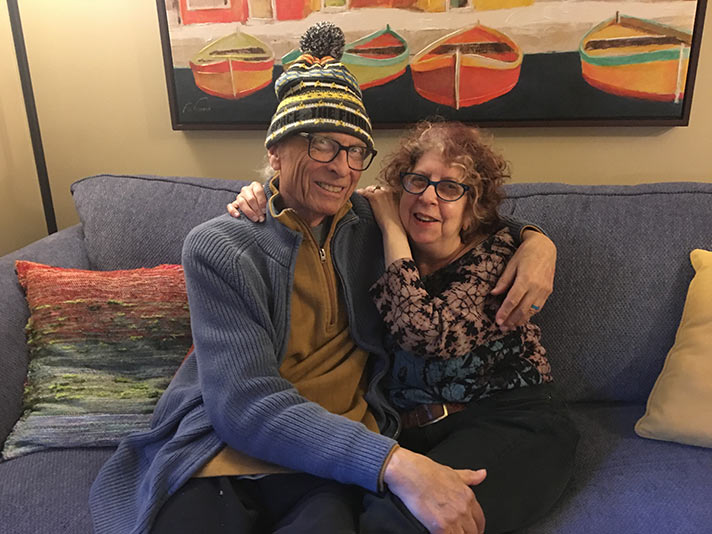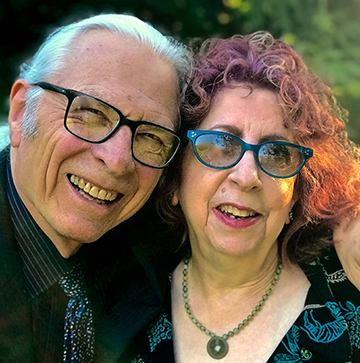“It’s a whale of a tale I’ll tell you, lads, a whale of a tale or two.”
In late September 2019, Paula and I were walking through Manhattan’s Upper West Side, admiring the ironwork that enhances the stoops on the brownstones. At one point I glanced up and saw that Paula was thirty feet ahead of me.
“Are you walking fast?” I called out.
“Not any faster than usual,” she answered, and paused to wait for me.
We resumed our tour. Five minutes later I noticed that she again was far in front of me. “You must be running.” I said, and I hastened my steps in order to catch up.
By this time, our destination, the Natural History Museum, was in sight, and we soon traded the mystery for a feeling of awe for the Mesozoic era, with skeletal brontosaurus towering above us. The museum is a marvelous place to forget one’s concerns.
Several weeks later, back in our forested hillside home in Southern Oregon, I noted odd physical developments in addition to being unusually slow, and called my doctor. “Come in first thing in the morning,” his assistant responded. Really? Not make an appointment the usual month later?
Blood test. CT scan. And a trip to a specialist. Another blood test. Another CT scan. Three days after first calling my doctor, the specialist called me in. “There’s no way to say this lightly, so here it is,” he said. “You have third stage pancreatic cancer.”
I readily admit to crying before leaving his office.
And so it began. More scans. More tests. And more physical reactions. You’ve heard of jaundice, where one turns yellow? My skin became the tone of Captain Kirk’s tunic. And my eyes glowed like gold nuggets in the noonday sun. But color has little to do with it. You know what an itch is, where suddenly there’s a small irritation on your arm and you reach over to scratch it? Well, the human skin is the body’s largest organ. My skin became one solid itch: every millimeter, full itch, all the time; no way to scratch anywhere or everywhere. For over one hundred days. What does one do? Live with it, of course.
My liver, in reaction to my pancreas, was producing too much “bilirubin” bile. Normal level registers below two ml, while mine was at eighteen. I was fitted with a tube running from my liver through a hole punched in my chest into a hanging bag, and a second tube (and hole and bag) from my abdominal cavity to drain the overflow. So I walked around with two bags dangling from my chest (that had to be maintained, drained, measured, sanitized) for the next three months. Try taking a shower like that! Note that no one in the public arena saw me during this period; only the road between home and Asante Hospital knew of my comings and goings.
January 2020. A trip to OHSU, the amazing Oregon Health and Science University in Portland, prescribed fourteen weeks of Chemotherapy. But what kind of chemo? The strongest, most effective, as well as possibly most physically disruptive, is called “Folfirinox.” It consists of a “cocktail” of chemicals, poisons, actually, pumped directly into the bloodstream. Encouraged by five doctors, and warned as well, I agreed to go there. The strongest chemo. In for a dime in for a dilemma.
Chemo infusion sessions are boring—except for the side affects: The first thing one notices is that the sense of taste just dies. But that’s not the bad part: the mouth and throat don’t wanna. Just don’t wanna. A common complaint among chemo patients is that “food tastes like nothing.” I disagree. I assert that food tastes like cardboard that tastes like nothing. Forcing food into my mouth—and getting my reluctant, protesting throat to let it pass through—made me feel primitive—like an animal tearing flesh from prey on the floor of the forest. Primitive. Awful. Terrible. For months.
I lost fifty-four pounds. Only Paula and the doctors (now consisting of a team at Asante, those at two affiliated facilities in Medford, and the team at OHSU) saw me shirtless. The last time I weighed 128 I’d been an eighth grader.
AND NOW COMES THE FUN PART: Planet Earth unexpectedly was struck with a pandemic. Suddenly my clinic visits became “virtual.” We had to learn (thank you, Paula) to work with three different websites to communicate with the various doctors. As if I wasn’t miserable enough, the White House assured us that everything was just fine. If that was so, why suddenly were my chemo infusion nurses wearing different PPE? Why was every hospital doorway equipped with sanitizers and “NO VISITOR” signs? Why was Paula dropping me at the door instead of coming in to sit with me? Just fine, you say, White House? Just fine, my ass.
“If you are immunocompromised, take precautions,” the newscasters said. Um… pancreatic cancer here! How’s that for immunocompromised? Every action had dropped by several levels of more difficult.
Next up, May 1st. The medial team had scheduled an operation known as “The Whipple Procedure” to take place at OHSU. This time the trip to Portland found the cafes closed, so detecting a place to pee was a hassle—and the med team suggested I stay out of the probably unsanitary public rest stops. Well, crap. What ya gonna do? Plus, I had to arrive there two days early in order to take a COVID-19 test—while the majority of hotels had closed. The hospital took care of it: a doctor with an apartment in the lower level of her home gave us the apartment. They are wonderful people, the staff at OHSU!!!!
So on May 1st Paula and our dear friend Judit, who had driven with us, dropped me in the parking lot at the hospital. I would be there, the staff predicted, for up to ten days.
During six hours in the operating room, a team of cancer specialists removed thirty percent of my stomach, took the head off of my liver, took the head off of my pancreas, including the tumor that had caused this whole mess (and this essay), and removed my gall bladder. Two days in ICU, three days in recovery. Then Paula and Judit picked me up (along with the ten-inch scar running downward from my rib cage. It ain’t pretty.) and drove me home.
So what was accomplished? Around the first of June, after more tests and scans, the doctors proclaimed that I am cancer free. That’s—Free. “You’re not cured,” the beloved surgeon stated, “but you’re clean and clear. There are no apparent wild cells anywhere in your body.” Can this be true? About the first of July, he called again to say, “The OHSU Cancer Board had a meeting and named you “Poster Child for Pancreatic Cancer.”
Well, hell. I’m honored!
“So you may have bought me a year,” I said. “I hope you bought him two years,” Paula added. “I think we bought you ten years,” came the surgeon’s response. Whew. I almost cried for a second time.
They assigned me another regime of chemo, just to lock everything in, which I’m in the midst of now. After which I’ll attempt to put some pounds on my still (like the brontosaurus) exposed bones.
Other than that, my past ten months have been uneventful.
How about yours?

 Paula and Terry identify as writers, with an ever-increasing number of published works to support the supposition. They live a primarily pastoral life in the enchanted town of Jacksonville.
Paula and Terry identify as writers, with an ever-increasing number of published works to support the supposition. They live a primarily pastoral life in the enchanted town of Jacksonville.
Wow what a journey! Congratulations on your recovery
Blessings to you both
No doubt there were times you uttered, “Beam me up Scottie”. Glad that didn’t happen. New perspective on life, right? You’re a warrior now. Enjoy every day!
Thank you for sharing your experience, strength and hope! We have missed your physical presence around the neighborhood and have been glad to see you coming out lately! God bless you both!
Trish Trefren
What a year! This is such wonderful news! I’m sure it wasn’t easy. I have been wondering why I hadn’t seen you two walking in our neighborhood.
Blessings for continued health in the days to come.
Doug and Lori Whitehead